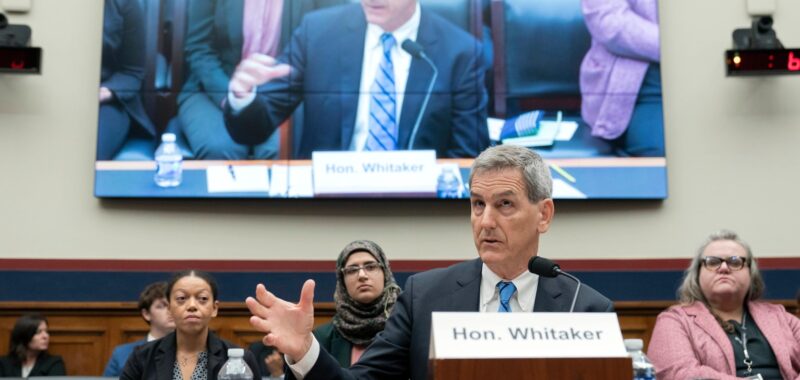Boeing’s critics often claim that two deadly jetliner crashes a few years ago and the blowout of a section of a third plane in January made clear that the aircraft manufacturer cut corners during production and put profits above safety.
The head of the Federal Aviation Administration, Boeing’s regulator, said Tuesday that while it is not his job to assess Boeing’s finances, giving too little attention to safety has not turned out well for the company.
“Even if profits were your No. 1 goal, safety really needs to be your No. 1 goal because it’s hard to be profitable if you’re not safe, and I think Boeing certainly has learned that,” FAA Administrator Mike Whitaker said during a U.S. House subcommittee hearing. “Whatever money might have been saved has certainly been lost in the fallout.”
The observation might have been an understatement. Boeing has lost more than $25 billion since the start of 2019 and fallen far behind rival Airbus in orders and deliveries of planes to airline customers. A strike by the factory workers who assemble the company’s best-selling planes is further weighing on Boeing’s output and finances.
Striking Boeing workers were back on picket lines in the Pacific Northwest a day after Boeing announced a “best and final offer” for a contract that wold include bigger pay increases and more bonus money than were in a proposal that union members overwhelmingly rejected earlier this month.
Boeing pitched the new offer directly to workers, circumventing negotiators for the International Association of Machinists and Aerospace Workers. Regional union leaders, who endorsed the original contract offer that rank-and-file members rejected, reacted angrily to the presentation of the new offer and said they would not call a ratification vote before a Friday night deadline the company initially set.
In turn, Boeing said Tuesday that it would give the union more time to consider the proposal and to organize a ratification vote.
“This strike is affecting our team and our communities, and we believe our employees should have the opportunity to vote on our offer that makes significant improvements in wages and benefits,” the company said in a statement.
The two sides have not held formal negotiations in nearly a week, since sessions led by federal mediators broke off.
Cai von Rumohr, an aviation analyst at financial services firm TD Cowen, said Boeing’s decision to make its latest offer in the absence of additional bargaining sessions put the proposal’s potential ratification in doubt.
“If it fails, it should prompt union leadership to reengage in serious negotiations. However, the problem is that union leadership lost credibility by endorsing (Boeing’s) first (contract offer), which was soundly defeated in a 96% strike vote,” von Rumohr said. “Thus, its ability to get the membership to approve a richer (offer) also is in question.”
The strike has shut down production of Boeing 737s, 767s and 777s and is causing the company to make cost-cutting moves, including rolling temporary furloughs for thousands of nonunion managers and employees.
Boeing needs to deliver more planes to bring in more cash. In February, after a panel blew off during an Alaska Airlines flight the month before, the FAA limited Boeing’s production of 737s — its best-selling plane — to 38 per month until the company improved its quality-control process.
Whitaker, who previously acknowledged his agency’s oversight of Boeing wasn’t strong enough, told lawmakers Tuesday that the production cap is the FAA’s leverage to make Boeing improve its safety culture. He said it might take Boeing years to change its safety system and culture.
One lawmaker noted that Boeing reached agreements with the FAA and the Justice Department in 2015, 2021 and 2024 to do more on safety, and incidents like the door plug blowout on an Alaska Airlines 737 Max keep happening.
“The key difference now between previous challenges with Boeing is that we have put a production cap in place,” Whitaker said. “In order for Boeing to meet any of its other financial objectives, it’s going to have to get past those production levels, which means it has to operate safely.”
The FAA will judge Boeing’s progress largely by measures such as employee surveys about safety, the level of whistleblower complaints, and how many times jobs are done out of order on the factory floor, which Whitaker said increases the risk of mistakes.
He said that since Boeing submitted a plan to improve its manufacturing and take measurements, “They have been trending in the right direction.”
The FAA stepped up its scrutiny of Boeing, including putting safety inspectors in the factories, after the Alaska Airlines blowout.

